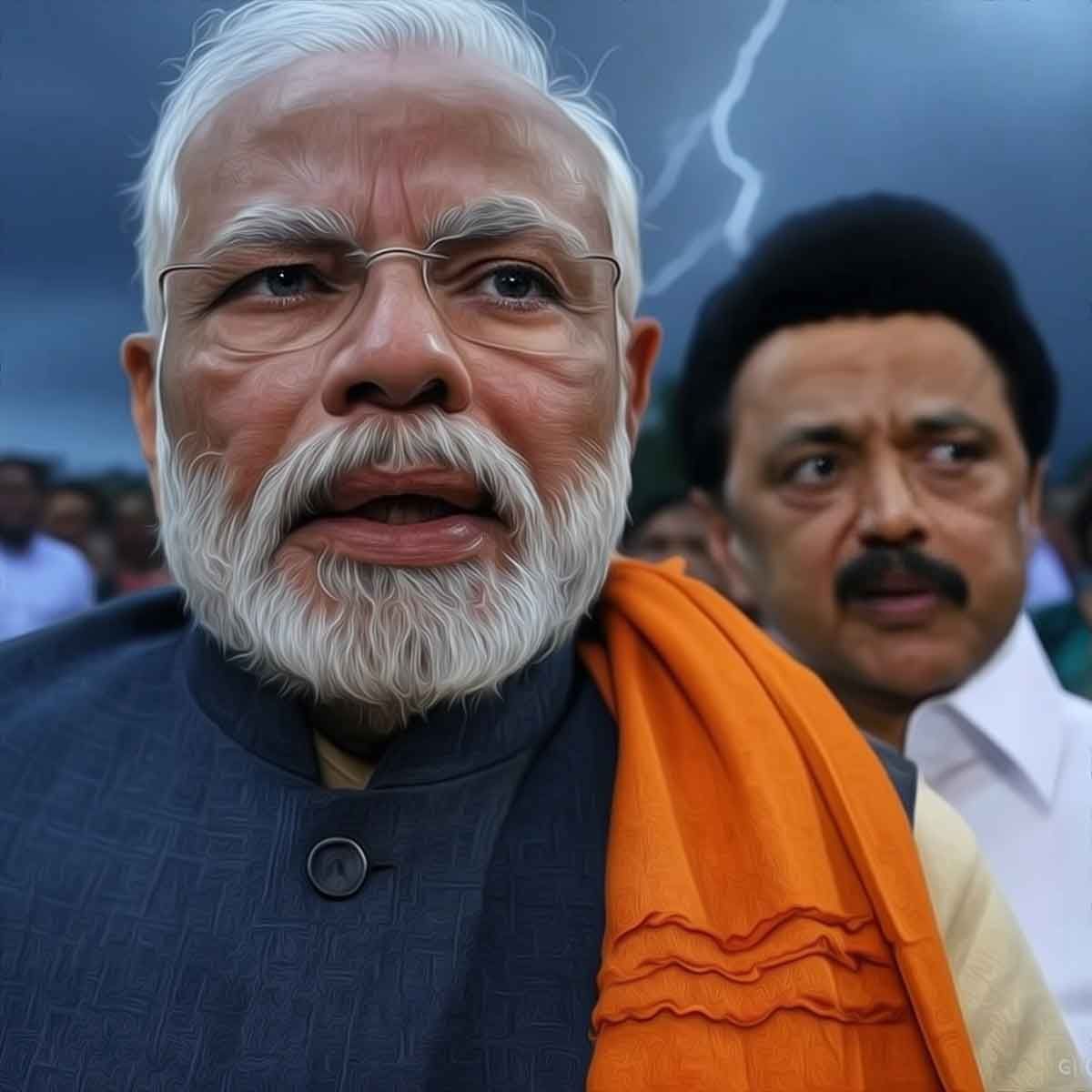More Coverage
Twitter Coverage
Satyaagrah
Written on
Satyaagrah
Written on
Satyaagrah
Written on
Satyaagrah
Written on
Satyaagrah
Written on
JOIN SATYAAGRAH SOCIAL MEDIA
"अच्छा": Despite serious allegations, the court granted interim bail to Meeran Haider, a PhD student who orchestrated the 2020 anti-Hindu Delhi riots, mobilizing crowds and coordinating violence across 20 sites, revealing deep-seated plots against CAA-NRC

In a recent development, the Delhi Court has granted interim bail to Meeran Haider, a student from Jamia Millia Islamia and a prominent leader of the Rashtriya Janata Dal (RJD) youth wing. Haider has been implicated in the "larger conspiracy case" connected to the 2020 Delhi riots, which involves serious allegations of a coordinated effort to incite violence in the national capital.
|
Meeran Haider sought bail on humanitarian grounds following the tragic loss in his family. His sister's premature child recently passed away, leaving his family in deep mourning. Haider's legal representative emphasized that his sister is currently without support from other male family members, as her husband works in the UAE and is not present to provide immediate assistance during this difficult time.
During the bail hearing, Haider's lawyer brought to light that Haider has been in continuous custody since April 1, 2020, marking a prolonged period of detention without any prior requests for interim bail. The lawyer underscored the urgent need for Haider's presence alongside his grieving sister, stressing that family support is crucial in moments of such profound loss and distress.
On the other hand, the prosecution acknowledged the circumstances presented in the application. In their official response, they stated that the facts mentioned in the application have been verified, confirming the authenticity of the situation described by Haider's defense. They further noted that the husband of the sister of the applicant, who is currently in India but is leaving for the UAE on Sunday, which would leave Haider's sister without immediate familial support upon his departure.
Presiding over the case, Additional Sessions Judge Sameer Bajpayi carefully considered the submissions from both the defense and the prosecution. After thorough deliberation, Judge Bajpayi concluded that the request for interim bail was justified given the humanitarian grounds presented. In his ruling on Saturday, he stated, "the Court deems it justified that the applicant should be granted the desired relief. Accordingly, the application is allowed. The applicant, Meeran Haider, is granted interim bail for ten days."
This decision allows Meeran Haider a brief respite from custody to attend to his family's needs and provide support during their time of bereavement. The ten-day interim bail period is expected to offer Haider the opportunity to be with his sister and help her cope with the loss amid the absence of her husband.
The 2020 Delhi riots case continues to be a matter of significant legal scrutiny and public interest, with multiple individuals facing serious charges related to the unrest. Haider's interim bail does not absolve him of the allegations but serves as a temporary relief based on compassionate grounds. The case proceedings are expected to resume following the completion of his interim bail period, as the court continues to investigate the intricate details surrounding the alleged conspiracy and acts of violence during the riots.
The accused, Meeran Haider, upon his release, shall not get in touch with any of the witnesses, nor will he tamper with the evidence. This court-issued mantra aims to ensure that Haider, presumably like a well-behaved guest at a high-stakes gala, will avoid any undue mingling. He is also instructed to provide his mobile number to the investigating officer and keep his mobile phone open throughout the interim bail period. Furthermore, during this gracious window of conditional liberty, Haider is expressly forbidden from conversing or giving any interviews to any media, including social media—effectively muzzling him from tweeting his way into further trouble.
Meeran Haider's journey through the legal labyrinth continues as his regular bail application languishes in the deliberative confines of the Delhi High Court. His quest for regular bail had previously been unceremoniously rebuffed by the trial court, as if dismissing an unworthy suitor at a Victorian ball.
Meanwhile, the Delhi Police portray Haider as a key coordinator for the Jamia Coordination Committee (JCC) and a significant player in orchestrating protest sites during the notorious February 2020 Delhi Violence. Their narrative does not mince words; it charges him with actions sufficient to merit accusations under the stern gaze of the Unlawful Activities (Prevention) Act (UAPA) and various sections of the Indian Penal Code (IPC). Alongside activists Umar Khalid and Sharjeel Imam, Haider is cast as a mastermind behind the riots, a scriptwriter of urban upheaval, in a tale that left 53 people dead and over 700 injured amidst the tumult spurred by the Citizenship (Amendment) Act (CAA) and the National Register of Citizens (NRC).
In this judicially penned drama, the decision to grant interim bail might appear to some as a darkly comic subplot, allowing a brief intermission in the ongoing saga of legal and moral conflict. The court, in its infinite wisdom, has chosen to extend a ten-day reprieve—a brief soliloquy of freedom, under strict conditions, to a protagonist embroiled in a narrative of national significance. This interlude allows Haider to tend to personal tragedies within the strict confines set by those who hold the scales of justice. It’s as if the judiciary, with a sardonic smile, permits a momentary lapse in the custodial embrace, fully aware that the audience—the public—is watching closely, waiting to see if the script will hold or if an unexpected twist is at play.
|
Role of Meeran Haider in Anti-Hindu Delhi Riots
Meeran Haider, a PhD student at Jamia Millia Islamia University, became a central figure in the investigations into the anti-Hindu riots that erupted in northeast Delhi in 2020. Arrested in April of the same year, Haider's connection to the rioting and criminal conspiracy unfolded a complex narrative that captured the nation's attention.
As the president of the Rashtriya Janata Dal (RJD) youth wing’s Delhi unit and a member of the Jamia Coordination Committee (JCC), Meeran Haider's involvement in the events leading up to the riots was multifaceted. He revealed startling details about the orchestration behind the chaos. According to Haider, "the anti-Hindu riots were planned after the Jamia violence," suggesting a premeditated agenda set in motion in response to earlier disturbances at the university.
Haider’s role was reportedly significant; he was "tasked with gathering a crowd for the protests and demonstrations in Delhi" and "overseeing other arrangements" necessary for mobilizing the participants.
During his interrogation, Meeran Haider provided even more damning disclosures to the Delhi Police. He claimed that "the riot was sponsored by the Popular Front of India (PFI)" and confessed to having received substantial financial support to fuel the unrest. "Meeran told the police that he had personally received Rs 5 lakhs to engineer the riots," indicating the existence of funded provocateurs intended to amplify the scale and intensity of the riots.
The choice of locations for these riots was also strategically significant. The Muslim-dominated areas of Delhi, such as Zafarabad and Seelampur, were reportedly targeted for disturbances. "Meeran and others were assigned the task of collecting knives, petrol, stones, and other materials," laying bare the preparations for violence that were both deliberate and meticulously planned.
|
Furthermore, Meeran Haider disclosed that he had taken steps to systematically manage the finances related to the riot plans. "He had prepared a register before the riots to maintain a record of all funds being collected for the purpose," he stated, emphasizing the organized nature of the funding mechanisms. The funds, collected as ‘Zakat’—a form of almsgiving treated in Islam as a religious obligation or tax—were allegedly used to purchase "gadgets, weapons, and other items required to carry out the task."
The accused told the police that he traveled to various states to mobilize support, incite people against CAA-NRC, and mentally prepare them for the riots. Meeran Haider's extensive travels were aimed at drumming up support for what would eventually unfold as the Delhi riots. His role was not just peripheral; he personally supervised anti-government demonstrations at no fewer than 20 sites across Delhi, indicating a central role in the orchestration of these events.
"He already knew Umar Khalid and Khalid Saifi, the two main facilitators of the Delhi anti-Hindu riots," Haider revealed, confirming his connections with other key figures who were also deeply involved in the planning and execution of the protests that turned violent.
In his statement, Meeran detailed the strategic approach taken after the Jamia violence. "After the Jamia violence and the ‘success’ of the Shaheen Bagh protest, they decided that protests should be held in more Muslim areas of Delhi where there was resentment against the Centre over CAA-NRC," he said. This strategy was specifically designed to tap into the existing discontent among communities in these areas, aiming to escalate the protests to a larger scale.
|
Meeran also outlined the phased approach to the protests, which were meticulously planned to evolve from peaceful demonstrations to full-scale riots. "The strategy was divided into three phases: protests, roadblocks, and riots," he explained. This phased approach indicates a clear and structured plan to escalate the intensity of the demonstrations over time.
He further mentioned the involvement of members from the DU’s Pinjra Tod group, noting that "Natasha and Devangana were secretly associated with this movement and were tasked with delivering inflammatory speeches." Meeran himself took charge of mobilizing crowds at various key protest sites including Shaheen Bagh, Khureji, Seelampur, Jaffarabad, Turkman Gate, Kardampuri, Mustafabad, and Indralok. He also managed WhatsApp groups that were used to incite and organize the riots, highlighting his pivotal role in both the digital and physical realms of the protest organization.
During his activities, Meeran collected information and relayed it back to the Jamia Coordination Committee (JCC) to aid in further strategic planning. This continuous feedback loop helped maintain the momentum of the protests and adapt strategies as needed.
Finally, Meeran disclosed his connections within the Popular Front of India (PFI), indicating a financial backing for the riots. "He confessed to knowing many members of the PFI, who provided money to incite the communal riots in Delhi, including PFI activists Sajid Mujid and Mohammad Sihad of Kerala, who sent Rs 20,000 to him for the riots," he stated. This financial support from PFI members played a crucial role in facilitating the riots, underlining the organized and funded nature of these disturbances.
 Support Us
Support Us
Satyagraha was born from the heart of our land, with an undying aim to unveil the true essence of Bharat. It seeks to illuminate the hidden tales of our valiant freedom fighters and the rich chronicles that haven't yet sung their complete melody in the mainstream.
While platforms like NDTV and 'The Wire' effortlessly garner funds under the banner of safeguarding democracy, we at Satyagraha walk a different path. Our strength and resonance come from you. In this journey to weave a stronger Bharat, every little contribution amplifies our voice. Let's come together, contribute as you can, and champion the true spirit of our nation.
 |  |  |
| ICICI Bank of Satyaagrah | Razorpay Bank of Satyaagrah | PayPal Bank of Satyaagrah - For International Payments |
If all above doesn't work, then try the LINK below:
Please share the article on other platforms
DISCLAIMER: The author is solely responsible for the views expressed in this article. The author carries the responsibility for citing and/or licensing of images utilized within the text. The website also frequently uses non-commercial images for representational purposes only in line with the article. We are not responsible for the authenticity of such images. If some images have a copyright issue, we request the person/entity to contact us at This email address is being protected from spambots. You need JavaScript enabled to view it. and we will take the necessary actions to resolve the issue.
Related Articles
- Twitter rewards an Islamist org, set to be banned by India, with a verified blue tick: Here is what PFI has done in the past
- "A symphony of anti-India agendas": Rahul Gandhi's camaraderie with Hindumisic author Christophe Jaffrelot in a recent event stirs controversy; the prolific critic of India, BJP & Indian judiciary, notably participated in 'Dismantling Hindutva' conference
- "Traitors wear many masks but have only one face": J&K Bank's Chief manager, Sajad Ahmad Bazaz, sacked for shadowy ISI links, manipulating media with bank funds, and ties to extremist leaders, was planted for advancing the extremist-separatist ideology
- Aatish Taseer shows how his ‘jamaat’ has mastery over playing victim, brands Bollywood pro-Modi even as it remains anti-Hindu
- Top woke Vir Das chose Kennedy Centre for his Monologue 'Two Indias' to insult Bharatvarsh: Major backlash; netizens shocked
- Ex-radicalised Muslim author studies mosques in UK, reveals Taliban, ISIS-like lifestyle of the ultra-orthodox community
- "Ummah Brotherhood over Motherland": "J&K's bold move: 4 government employees - a doctor, constable, teacher, and a lab bearer - terminated for terror links, showcasing a resolute crackdown on internal threats and corruption within the state's machinery
- In the latest string of assaults on Hinduism by I.N.D.I Alliance, Bihar RJD chief Jagdanand Singh stirs controversy, claiming that Tilak-wearing Hindus have enslaved India, igniting fierce debates and reactions from various quarters of the political arena
- Operation Polo: When India annexed Hyderabad from the Nizam and Razakars, the suppression of Hindus and the role of Nehru
- "Zip it, Shh…": In a triumphant revelation, NMC logo illuminates India's medical legacy with Dhanwantari, silencing misguided critics and fake news peddlers, we boldly navigate the Ayurveda & modern medicine, rewriting the narrative with undeniable facts!
- Why Hindus not claiming their temples back from the Government control: Is pro-Hindu govt will always be in power
- "Hum Bolega to Bologe ki Bolta hai": Twitter account of pro-Khalistan author Amaan Bali withheld in India, he supported violent Farmer Protest, accused ‘Sanghi Ecosystem’ earlier and blamed Hindus and Nupur Sharma for attack on Sikhs in Afghanistan
- X freezes IAMC & HfHR accounts over Anti-India claims, let's delve deep to uncover HfHR & IAMC's covert anti-Hindu motives, exposing their strategic efforts to malign Hinduism, their narratives highlight a concealed bias against India's diverse spirit
- Terrorist Organization SFJ chief Pannu threatens PM Modi and India after the security breach, says ‘Tiranga wale fled from Punjab’
- The United Front of Hostile Forces - Hindu Society Under Siege




























